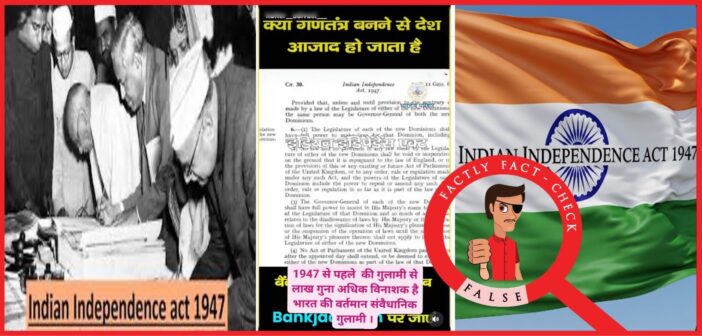A video (here, here) is going viral on social media platforms, claiming that, according to the Indian Independence Act of 1947, the British can once again rule India by cancelling the Constitution of India. The post alleges that under Section 6, Clause 3 of the Act, the Governor-General of India could not enact or revoke any law without the consent of the British Monarch. It further claims that then Governor-General C. Rajagopalachari gave his assent to the Constitution of India, which came into effect on 26 January 1950, with the approval of the British Monarch. We have also received several queries on our WhatsApp tipline (+91 92470 52470), asking whether the claim made in this video is true. Through this article, let us fact-check the claim made in the post.
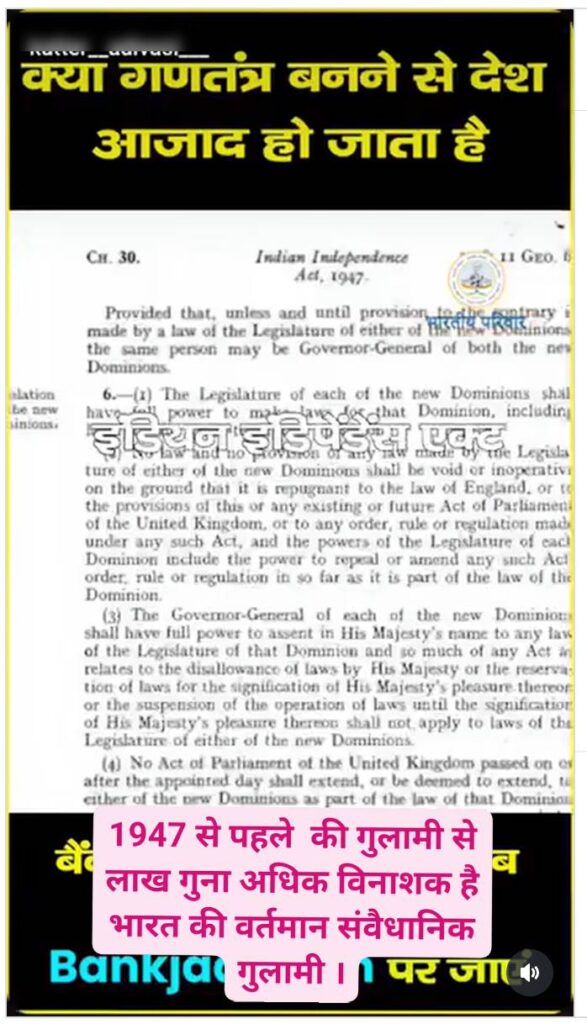
Claim: According to the Indian Independence Act of 1947, the British can once again rule India by annulling the Constitution of India.
Fact: No, the British cannot reclaim power in India using the Indian Independence Act of 1947. The Indian Independence Act established two independent Dominions—India and Pakistan—on 15 August 1947. Both countries remained Dominions under the British Crown until their respective constitutions came into effect: India in 1950 and Pakistan in 1956. Article 395 of the Indian Constitution and the Constitution of Pakistan, which came into effect in 1956, repealed the Indian Independence Act, 1947, in their respective countries. Moreover, Section 6(3) of the Indian Independence Act of 1947 clearly states that the Governor-General of India or Pakistan (each being a Dominion within the British Commonwealth at the time) was fully authorized to approve any law passed by that Dominion’s legislature without the consent of the British Monarch. The British King no longer had the power to reject (disallow), delay (reserve), or suspend any law passed by the legislatures of India or Pakistan. Hence the claim made in the post is FALSE.
The Indian Independence Act, 1947 was passed by the British Parliament and received royal assent from the British Monarch on 18 July 1947. The Act formally ended British rule in India and Pakistan from 15 August 1947 by terminating the suzerainty of the British Crown over all Indian states and all treaty obligations. It granted full legislative sovereignty to the new Dominions, removing the British Monarch’s power to veto or delay laws passed by their respective legislatures.
- The provinces of Bengal and Punjab were to be dissolved. Bengal was divided into West Bengal and East Bengal, and Punjab into West Punjab and East Punjab.
- The Act established two independent Dominions—India and Pakistan—effective from 15 August 1947.
- The territories of Pakistan were to include East Bengal (which later became East Pakistan, now Bangladesh), West Punjab, the Province of Sind, British Baluchistan, and the North-West Frontier Province (now known as Khyber Pakhtunkhwa), which was to join Pakistan if a majority of its population voted in favour of joining the new Dominion.
- The territory of India was to include all parts of British India not designated to become part of Pakistan.
Key provisions of the Act included:
- Each Dominion was to have a Governor-General representing the British Crown. After 15 August 1947, Lord Mountbatten remained India’s Governor-General, while Muhammad Ali Jinnah became Pakistan’s Governor-General.
- India and Pakistan were granted full authority to enact their own laws, even with extraterritorial effect.
- Each Dominion could amend or repeal any existing British laws that remained in force.
- The British Crown’s authority over princely states lapsed.
- The title “Emperor of India” was dropped by the British Monarch.
- The British Indian armed forces were to be divided between the two new Dominions.
Both countries remained Dominions under the British Crown until their respective constitutions came into effect—India in 1950 and Pakistan in 1956.
The post claims that, under Section 6, Clause 3 of the Indian Independence Act, 1947, the Governor-General of India could not enact or revoke any law without the consent of the British Monarch. However, Section 6(3) of the Indian Independence Act, 1947, clearly states that the Governor-General of India or Pakistan (each being a Dominion within the British Commonwealth at the time) was fully authorised to approve any law passed by that Dominion’s legislature without the consent of the British Monarch. The British King no longer had the power to reject (disallow), delay (reserve), or suspend any law passed by the legislatures of India or Pakistan.
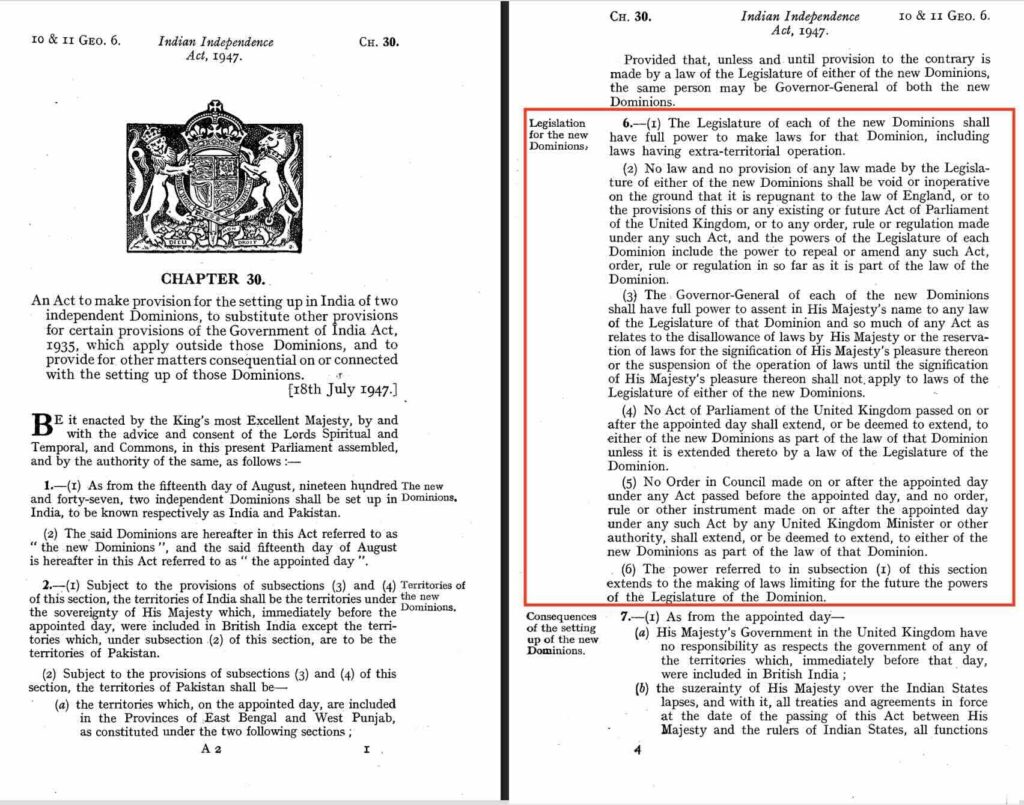
Section 9 of the Indian Independence Act, 1947, granted the Governor-General temporary powers to facilitate a smooth transition during the partition of India. These powers included the division of government assets, property, and liabilities between the new Dominions, as well as the adaptation of existing laws for the transitional period. To validate actions taken in anticipation of the Act, these powers were made retrospective to 3 June 1947. Clause 5 of Section 9 stated that these powers would expire by 31 March 1948, or earlier if so decided by the new Dominions. Furthermore, any orders made under these powers could be amended or repealed by their respective legislatures.

According to a press note issued by the Ministry of Law, Government of India, dated 01 April 1948, all powers vested in the Governor-General under the Indian Independence Act had lapsed by 01 April 1948. The press note states: “The Governor-General’s power to make Orders under the Independence Act has lapsed by 01 April 1948, and if any further amendments are required—either to any Indian law or to the provisional Constitution—they should hereafter be made by legislation passed by the appropriate legislature or by the Constituent Assembly of India meeting as a constitution-making body, as the case may be.”

It should also be noted that Article 395 of the Indian Constitution and the Constitution of Pakistan, which came into effect in 1956, repealed the Indian Independence Act, 1947, in their respective countries.
Article 395 of India’s constitution, originally discussed as Draft Article 315, repealed the Indian Independence Act, 1947 and the Government of India Act, 1935, along with all enactments amending or supplementing the latter Act—except for the Abolition of Privy Council Jurisdiction Act, 1949, which preceded the Constitution. This Draft Article, as amended, was adopted into the Constitution on 17 October 1949. Therefore, it is clear that Article 395 repealed the Indian Independence Act, 1947, rendering it no longer operational in India.
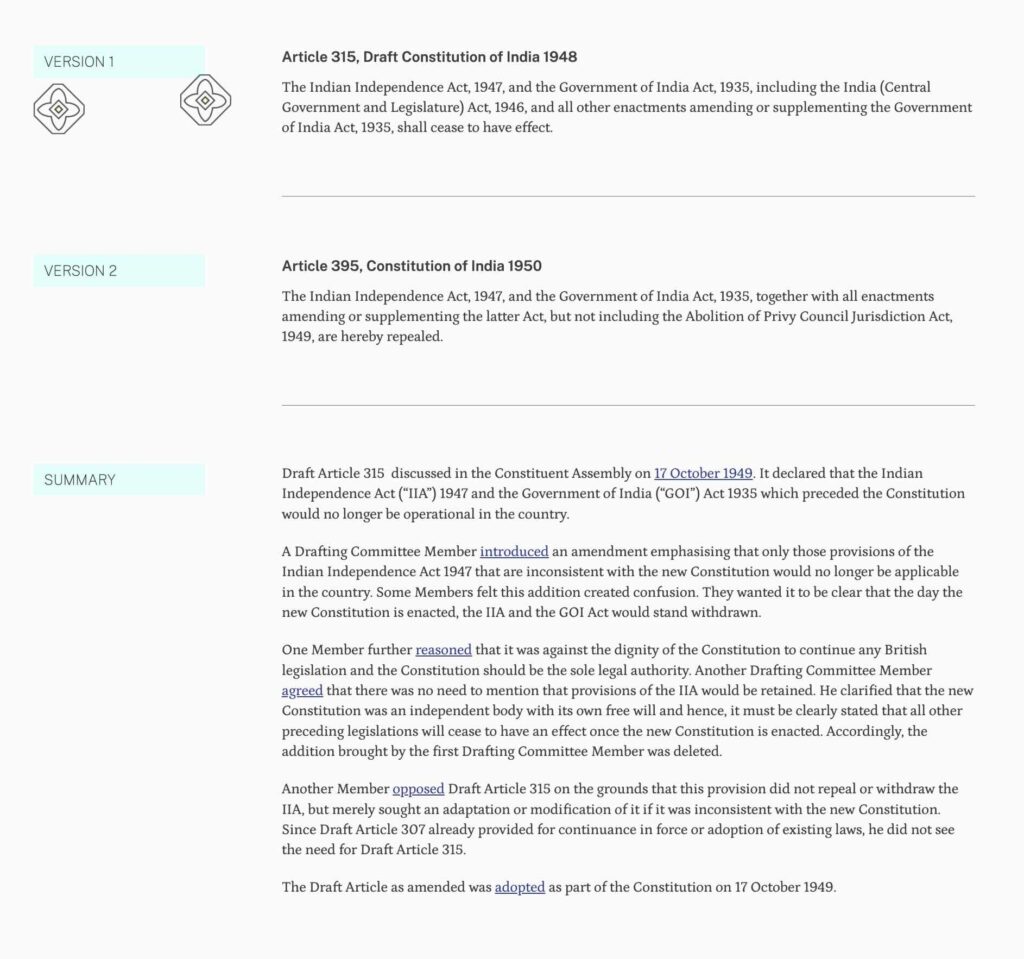

It is also important to note that even though the Constitution repealed certain older laws under Article 395, India did not revoke all pre-Constitution laws on 26 January 1950. Instead, these laws continued to remain in force temporarily, unless amended or repealed by Parliament or the State Legislatures.
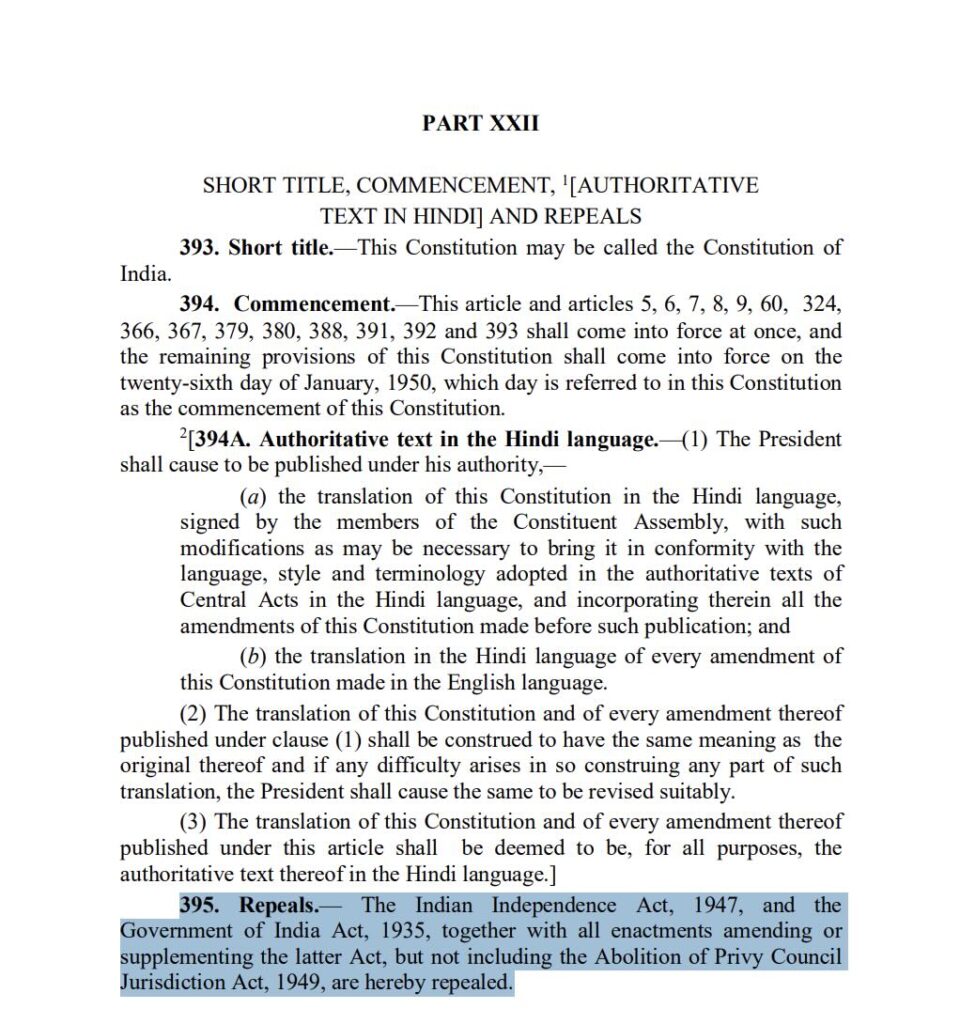
Article 372 of the Constitution ensures that all laws in force before the commencement of the Constitution would continue to be valid to avoid a legal vacuum, unless altered or repealed by a competent authority. To bring such laws in line with the new constitutional framework, the President was granted temporary powers to modify them by issuing orders, but only within the first three years from the Constitution’s commencement. However, any such modifications were subject to amendment or repeal by the appropriate legislation or authority.
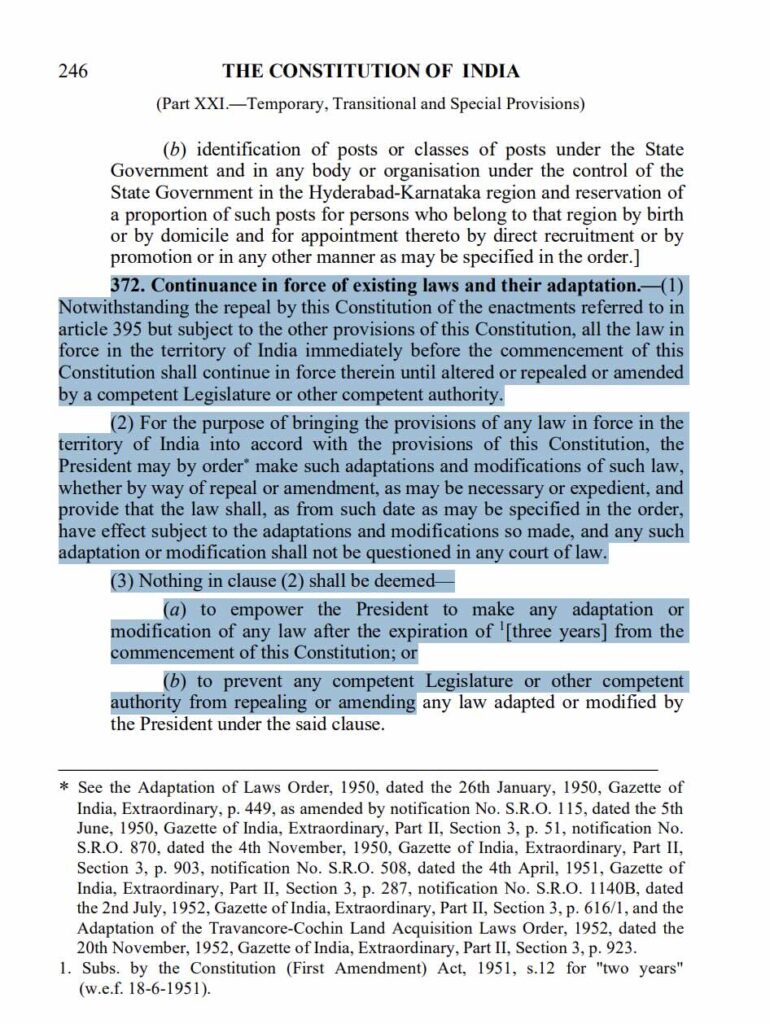
To sum it up, the claim that, according to the Indian Independence Act of 1947, the British can once again rule India by cancelling the Constitution of India is false.


